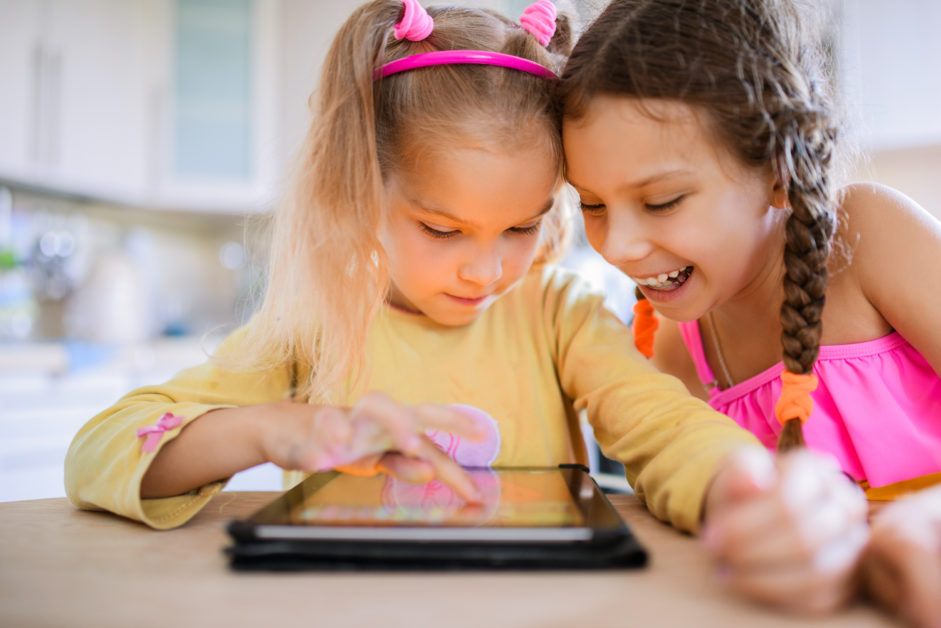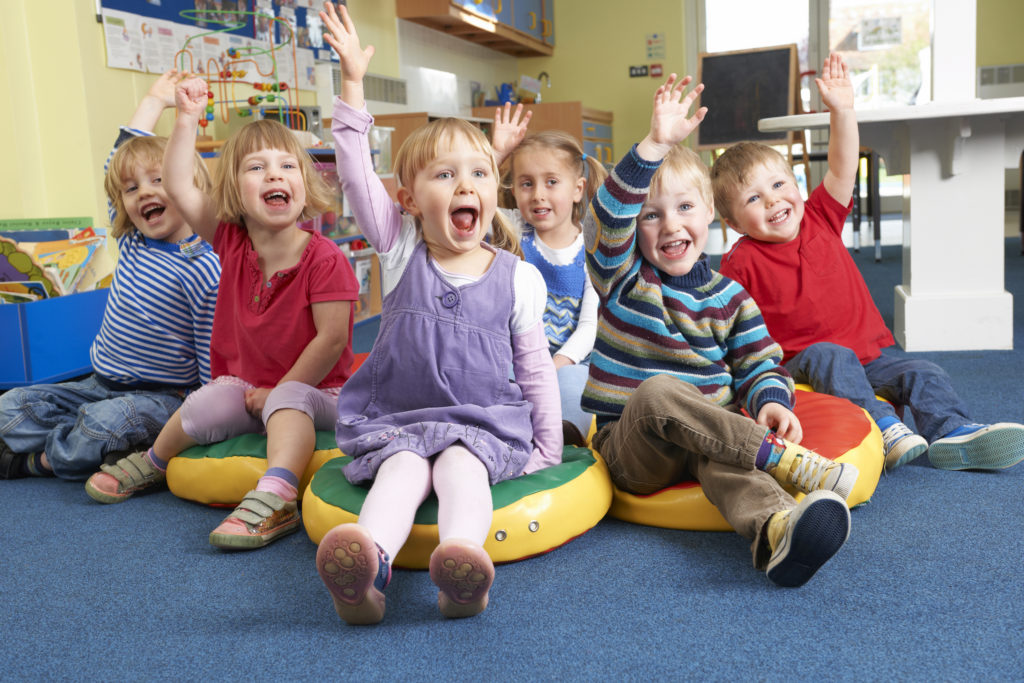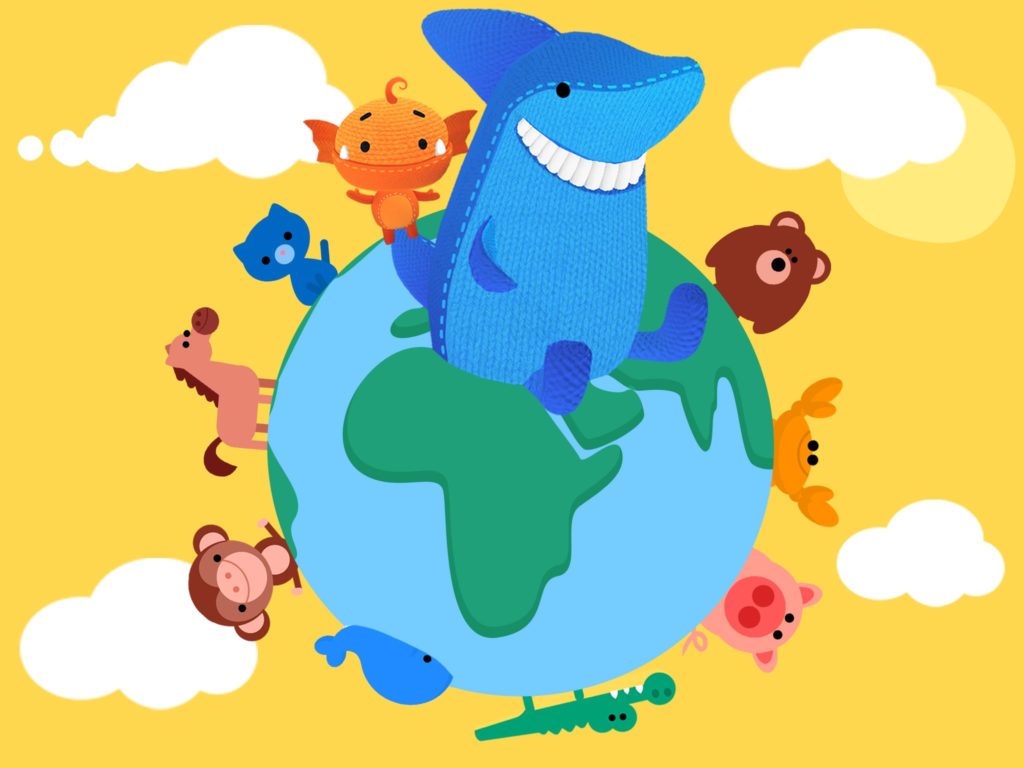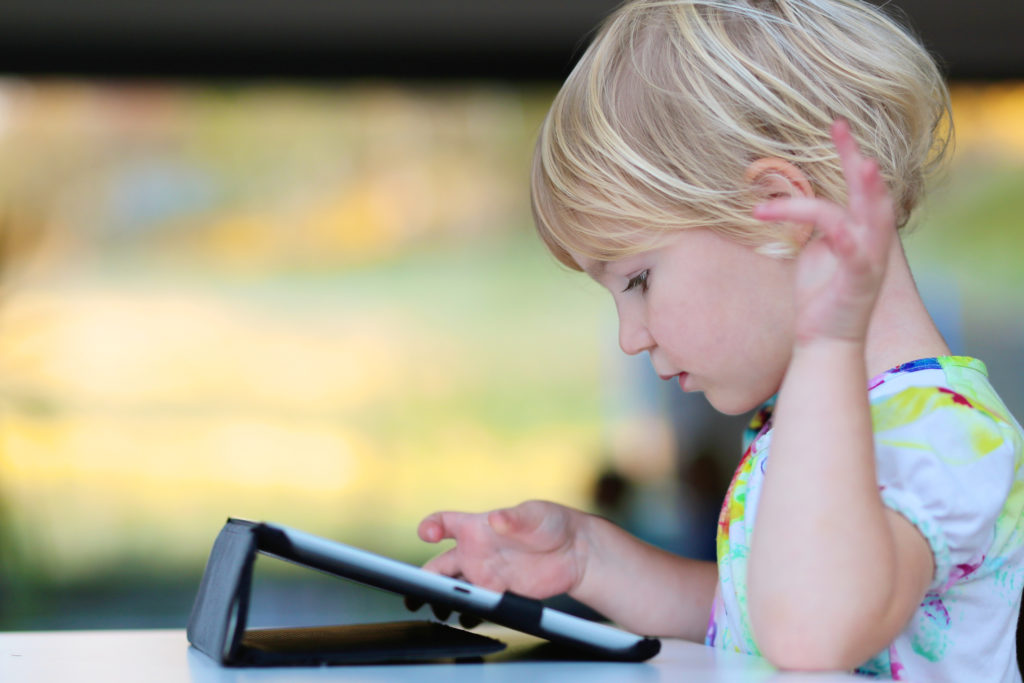
Child Development, News, The Good Play Guide, November 10, 2022
“Fish swim, birds fly, children play.”
– Dr. Garry Landreth
Play is as natural to children as flight is to birds. It’s their purpose. Play is how children learn about themselves, and others, and make sense of their world. There is no simple definition of play because it serves infinite purposes and comes in many forms. If you watch a child interact with others, objects, and/or their surroundings, chances are they are engaging in play.
Digital play occurs when a child uses a device or digital tool (e.g. tablet, computer, phone, video game console) to engage in play. Finnish researchers note that digital play is, perhaps, “the first qualitatively different form of play that has been introduced in at least several hundred years” (Salonius-Pasternak & Gelfond, 2005, pg. 2). From video games and apps to virtual worlds – digital play has unleashed new opportunities for learning, interaction, and engagement.
As caregivers and care centres integrate digital play into children’s lives, the novelty of digital play makes it complex. How should digital play be incorporated positively into children’s play diets? Because learning and play are inextricably tied, it’s critical to ensure that children can learn through digital play. The good news is that there are over 50 years of research on children’s media that shows that children can and do learn from high-quality digital media experiences (Fisch & Truglio, 2014). But the app store has often been called the ‘Digital Wild West’ (Guernsey et al., 2012), full of disorganized categories, arbitrary rankings, and unreliable reviews. With the app store ever-expanding, it’s critical for caregivers to be discerning and find high-quality opportunities for children. So what features in digital play create a high-quality experience? The Four Pillars of Learning offer insight.
Researchers have evaluated children’s digital apps using the Science of Learning framework to examine how children learn through these unique experiences. Studies found that apps should incorporate the Four Pillars of Learning which include: 1) active (as opposed to passively receiving information; ‘minds-on learning’), 2) meaningful (connected to children’s daily experiences), 3) socially interactive, and 4) promote engagement (focused/interested; not distracted) (Hirsch-Pasek et al., 2015). An app does not need to contain all four, but a combination of these attributes should be present to support meaningful learning experiences. Digital media are good at pulling in children with sounds, lights, and animations, but high-quality digital media moves away from ‘attention-grabbing’ and promotes ‘attention-building’. This method authentically engages children in the content and does not merely distract them (Mostafavi, 2019).

While the app store is full of choices, there is a lack of evidence-based, curriculum-centred, play-tested apps for children. During a market scan of educational literacy apps, research found that “fewer than a third of all apps mentioned an underlying educational curriculum. And any app testing was even rarer: 24% of app descriptions mentioned research testing, which was overwhelmingly usability or appeal testing rather than learning efficacy” (Vaala & Levine, 2015).

Moka Mera Lingua and Moka Mera Emotions are two play-based learning apps that are informed by experts, supported by research and grounded in a high-quality curriculum. Moka Mera Lingua app teaches languages and the Moka Mera Emotions app teaches emotions. Both apps have accompanying lesson plans, which support the transfer of learning from digital to physical spaces.
Research completed on both apps showed a statistically significant increase in learning after children engaged with the apps and their associated learning materials (Gummer & Taylor, 2022). An additional finding was that the app was not only used in nursery schools but also at home, with caregivers. With easy-to-use resources for families, caregivers were able to see their child’s progress and support their learning outside of the classroom.
Dr Amanda Gummer, founder of FUNdamentally Children and the Good Play Guide, who conducted the research explains “apps like those by Moka Mera, that take an evidence-based approach to their design and impact are the gold standard in developmentally beneficial apps, allowing children to enjoy digital play whilst supporting healthy development of key skills.”
Including caregivers in the picture, is an essential piece of high-quality digital play. Co-play or ‘joint media engagement’ is one of the most important ways to ensure that children reap the benefits of digital play experiences. This means using the device or digital tool together and/or engaging in a discussion afterward. Extending play from the digital to the physical world, helps children transfer the learning that occurred and put it in a new context. Young children are still learning that 2D content on a screen is a representation of 3D content in real life (Barr, 2010). Whether you ask children to explain their digital play afterward, they teach you how to play, you ask about what they learned or discovered, or you create an activity extension that brings the learning to life; children need help transferring their digital experiences to the real world. While digital toys can be just as creative and educational as physical toys, caregivers often have less control over them given their individual-focused design.
Keeping the devices in a central place in the house, so that families can use them together can strengthen joint media engagement and deepen a child’s learning.
Digital play offers a unique opportunity compared to other types of play by providing personalized learning that can support the unique needs of each child. With digital play, children can customize characters, select levels based on expertise, and choose activities that fit their interests and needs. An important part of play is self-expression and digital play gives children opportunities to uniquely express themselves and be creative with customization and creation tools.

Not all play is created equal. Digital play should be incorporated into children’s play through a balanced approach (Gummer, 2020). Active, social, imaginative, free, child-led play has more benefits than passive screen time. And social play, whether digital or not, is more beneficial than solitary play. Play is about balance; indoor and outdoor, digital and real world, independent and social – the more we can give children diverse play experiences, the more exposure and opportunities we are providing them.
Digital play has become a fantastic way to help children learn about themselves, others, and their world.
References: